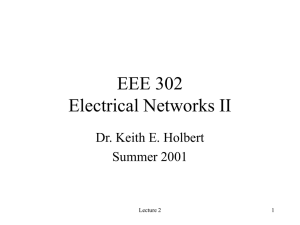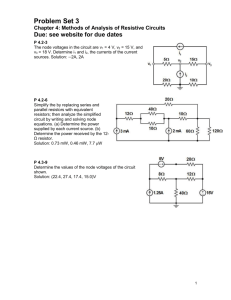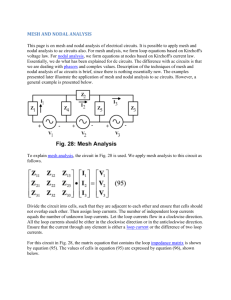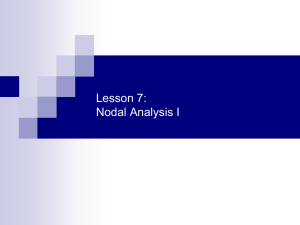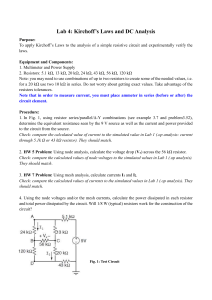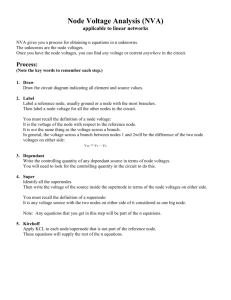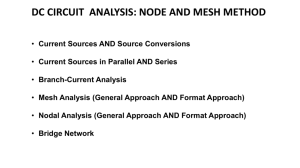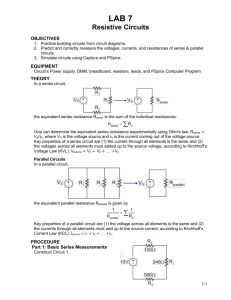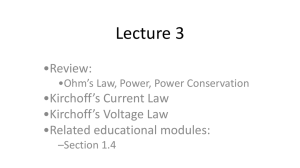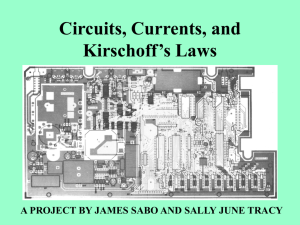Lab 3 - Cabrillo College
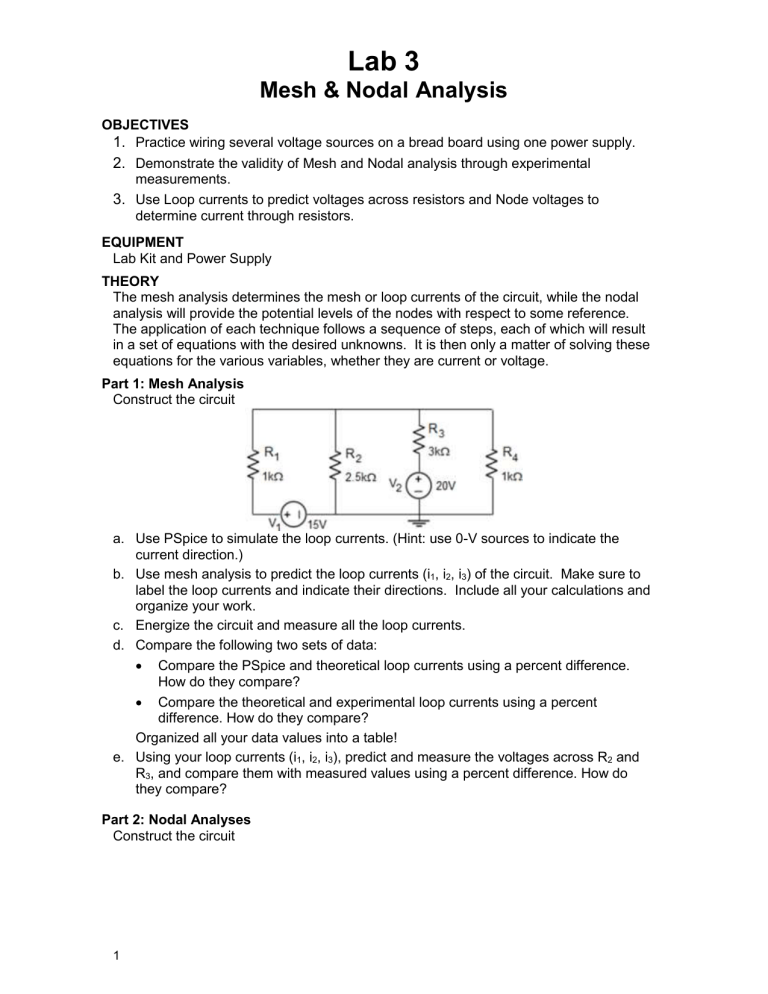
Lab 3
Mesh & Nodal Analysis
OBJECTIVES
1. Practice wiring several voltage sources on a bread board using one power supply.
2. Demonstrate the validity of Mesh and Nodal analysis through experimental measurements.
3. Use Loop currents to predict voltages across resistors and Node voltages to determine current through resistors.
EQUIPMENT
Lab Kit and Power Supply
THEORY
The mesh analysis determines the mesh or loop currents of the circuit, while the nodal analysis will provide the potential levels of the nodes with respect to some reference.
The application of each technique follows a sequence of steps, each of which will result in a set of equations with the desired unknowns. It is then only a matter of solving these equations for the various variables, whether they are current or voltage.
Part 1: Mesh Analysis
Construct the circuit a. Use PSpice to simulate the loop currents. (Hint: use 0-V sources to indicate the current direction.) b. Use mesh analysis to predict the loop currents (i
1
, i
2
, i
3
) of the circuit. Make sure to label the loop currents and indicate their directions. Include all your calculations and organize your work. c. Energize the circuit and measure all the loop currents. d. Compare the following two sets of data:
Compare the PSpice and theoretical loop currents using a percent difference.
How do they compare?
Compare the theoretical and experimental loop currents using a percent difference. How do they compare?
Organized all your data values into a table! e. Using your loop currents (i
1
, i
2
, i
3
), predict and measure the voltages across R
2
and
R
3
, and compare them with measured values using a percent difference. How do they compare?
Part 2: Nodal Analyses
Construct the circuit
1
a. Use PSpice to simulate the node voltages. b. Use node analysis to predict the node voltages of the circuit. Make sure to label all the nodes. Include all your calculations and organize your work. c. Energize the circuit and measure the node voltages. d. Compare the following two sets of data:
Compare the PSpice and theoretical node voltages using a percent difference.
How do they compare?
Compare the theoretical and experimental node voltages using a percent difference. How do they compare?
Organized all your data values into a table! e. Using your node voltages (v
2
, v
3
), predict and measure the currents through resistors
R
1
, R
2
and R
3
, and compare them with measured values using a percent difference.
How do they compare?
Part 3: Bridge Network
Construct the circuit a. Use PSpice to simulate the voltage drop (v
5
) and the current through (i
5
) resistor-R
5
. b. Use Node analysis to predict the voltage v
5
and Mesh analysis to predict the current i
5
. c. Energize the circuit and measure the voltage v
5
and current i
5
. d. Compare the predicted and measured results using a percent difference? How do they compare? e. Many times one is faced with the question of which method to use in a particular problem. This laboratory activity does not prepare one to make such choices but only shows that the methods work and are solid. From your experience in this activity, summarize in your own words which method you prefer and why for this circuit.
2
